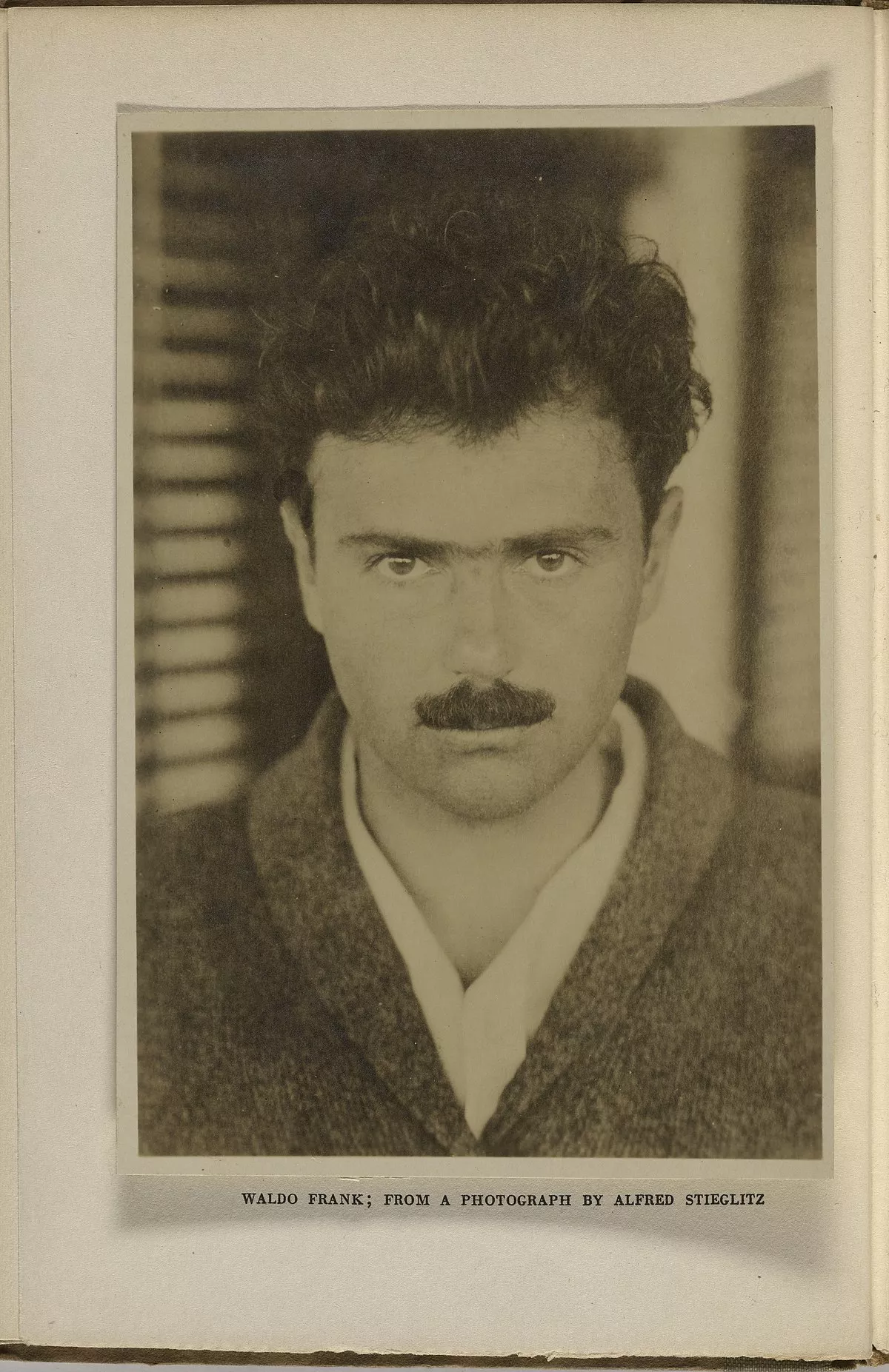 1.
1. Waldo David Frank was an American novelist, historian, political activist, and literary critic, who wrote extensively for The New Yorker and The New Republic during the 1920s and 1930s.

 1.
1. Waldo David Frank was an American novelist, historian, political activist, and literary critic, who wrote extensively for The New Yorker and The New Republic during the 1920s and 1930s.
Waldo Frank broke with the Communist Party, USA in 1937 over its treatment of exiled Soviet leader Leon Trotsky, whom Waldo Frank met in Mexico in January of that year.
Waldo Frank was born in Long Branch, New Jersey, on August 25,1889, during his family's summer vacation.
Waldo Frank was the youngest of four children to Julius J Frank, a prosperous Wall Street attorney employed by the Hamburg-Amerika Line, and his wife, the former Helene Rosenberg, who hailed from the American South and was the daughter of a Confederate blockade runner during the American Civil War.
The young Waldo Frank grew up on the Upper West Side of New York City, where he attended DeWitt Clinton High School.
Waldo Frank was expelled from school for refusing to take a Shakespeare course, saying that he knew more than the teacher and subsequently spent a year attending a college preparatory boarding school in Lausanne, Switzerland.
In January 1917, Waldo Frank married Margaret Naumburg, a postgraduate pupil of John Dewey.
Waldo Frank's first published novel, The Unwelcome Man, was a psychoanalytic look into a man contemplating suicide.
In 1916, Waldo Frank became associate editor of The Seven Arts, a journal that ran for just twelve issues but nonetheless became an important artistic and political influence.
In 1921 Waldo Frank met and became intense friends with the young writer Jean Toomer.
Waldo Frank served as editor for Toomer's first novel, Cane, a modernist work combining poems and associated stories, inspired by his working in the rural South as a school principal at a black school.
Waldo Frank became a regular contributor to the New Yorker in 1925 under the pseudonym "Search-Light".
Waldo Frank was an anti-militarist and declared himself a conscientious objector in registering for the draft in 1917.
Waldo Frank became increasingly political during the 1920s, joining the liberal magazine The New Republic as a contributing editor in November 1925.
In 1929 together with fellow writers Sherwood Anderson, Theodore Dreiser, and others Waldo Frank worked to raise money for striking workers in Southern textile mills.
Waldo Frank toured the Soviet Union in the summer and early fall of 1931 and returned to write a book on his experiences, Dawn of Russia, published in 1932.
Waldo Frank went to Harlan County, Kentucky, in 1932 in support of striking coal miners on behalf of the Independent Miners Relief Committee, where he was attacked by vigilantes and forcibly removed from the strike area.
Waldo Frank was elected as the chairman of that organization.
In January 1937, Waldo Frank went to Mexico to attend the congress of the League of Revolutionary Artists and Writers.
Waldo Frank largely removed himself from political activity during the 1950s until in the fall of 1959 he visited revolutionary Cuba and was impressed enough to temporarily accept the position of chairman of the Fair Play for Cuba Committee.
Waldo Frank published his final book, Cuba: Prophetic Island, a sympathetic account of the Cuban revolution, in 1961.
Waldo Frank was regarded as a living cultural bridge between North America and Latin America.
Already believing in Hispanic spiritual values, Waldo Frank traveled to Spain in 1921.
Waldo Frank had envisioned that there needed to be an organic synthesis of the two Americas: North and South, Anglo and Hispanic.
Waldo Frank thought that Spain had achieved a "spiritual synthesis of its warring religions" and could be "an example of wholeness" for the New World.
Waldo Frank's thought paralleled, in some aspects, the anti-imperialism of the Generation of 98, the Arielismo of Jose Enrique Rodo and the mysticism of Jose Vasconcelos.
Waldo Frank was responsible for the beginnings of a literary exchange between the US and Latin American, introducing authors from both sides to each public.
Victoria Ocampo was convinced by Waldo Frank to begin a literary journal in Argentina, which became Sur, one of the most important literary journal in Latin America.
At first Waldo Frank turned down the offer because he felt the connection to the government might stain his more independent reputation.
Waldo Frank later agreed, though, to help denounce the pro-Nazi drift of the Argentine government, which declared him a persona non grata.
Waldo Frank was pistol-whipped and repeatedly kicked in the head.
Waldo Frank died January 9,1967, in White Plains, New York.